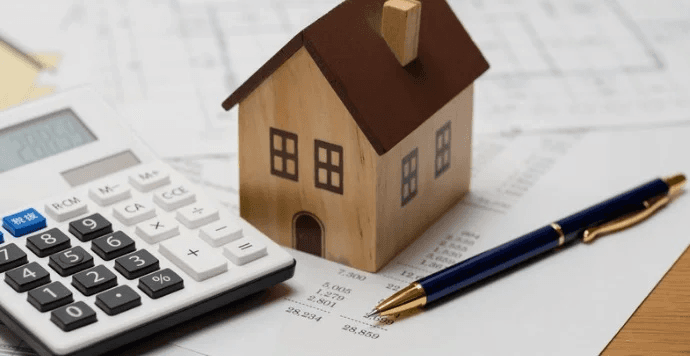Planning a home extension requires understanding costs like labor and materials. Builders like Class Constructions simplify the process with transparent pricing and efficient management. Their expertise ensures homeowners achieve exceptional results.
When planning a home extension, one of the most common questions is: How much will it cost? The answer varies depending on factors like size, complexity, and location. For Australian homeowners, understanding these costs of house extensions upfront is vital to avoid unexpected surprises.
This guide will explore average costs and explain how to use a house extension cost calculator for accurate budgeting. Let’s explore how you can transform your current home with the help of reliable builders like Class Constructions.
How Much Does a Home Extension Cost?
The cost of a home extension in Australia varies depending on the size of the extension, design, materials, and complexity of the project. Understanding the average costs and using tools like cost calculators can help you plan effectively and avoid unexpected expenses.
Average Cost of Home Extensions in Australia
Single-Story Extensions
For single-story extensions, the average cost ranges between $4,000 to $5,000 per square meter. Smaller, simpler projects typically fall on the lower end of this range, while larger ground-floor extensions or more intricate designs can cost significantly more.
Double-Story Extensions
Adding a second story increases complexity and requires additional structural reinforcements, making these projects affect the costs between $5,000 to $6,500 per square meter.
Custom or Complex Designs
Bespoke or architecturally unique projects often exceed $5,000 per square meter, as they involve specialized materials, intricate designs, and expert craftsmanship.
Understanding Home Extension Costs in Australia
Home extension costs in Australia vary widely due to several factors that influence budgeting and planning. Understanding these elements can help you make informed decisions and prepare financially for a successful project.
The Australian construction market is unique, with challenges such as fluctuating material exact costs, skilled labor shortages, and varying regulations across states.
Key Factors Affecting Home Extension Costs
 Planning a home extension in Australia requires a clear understanding of the factors that will affect costs, enabling you to budget effectively and achieve your dream space without unforeseen costs.
Planning a home extension in Australia requires a clear understanding of the factors that will affect costs, enabling you to budget effectively and achieve your dream space without unforeseen costs.
1. Labor Costs
Labor is often the most significant expense in any home extension project. Australia’s skilled labor market, including carpenters, electricians, and plumbers, commands premium rates. While this ensures the quality of inclusion results, it can substantially impact your overall budget.
2. Material Choices
The materials you choose play a critical role in determining costs later before you commit.
- Premium Materials: Provide durability, aesthetic appeal, and long-term value but come at a higher price.
- Mid-Range Materials: Offer a balanced approach for homeowners looking to maintain quality while managing expenses.
- Eco-Friendly Options: Sustainable materials may involve higher upfront costs but can reduce energy consumption and environmental impact in the long run.
3. Design Complexity
The complexity of your design significantly influences costs.
- Simple Designs: Easier to construct, requiring less labor and standard materials, making them more budget-friendly.
- Intricate Designs: Unique architectural elements, custom finishes, or tailored features often demand specialized labor and bespoke materials, driving up costs.
4. Location
Geographical factors impact labor availability, transportation costs, and compliance with local council regulations.
- Urban Areas: Higher labor costs due to demand but easier access to materials and tradespeople.
- Rural Areas: Lower labor competition but increased transportation expenses and potentially limited access to skilled trades. It could get difficult to get contractors in these areas.
Additional Factors to Consider
- Site Conditions: Properties on sloping land, poor soil, or limited access can require additional preparation work, adding to costs.
- Permits and Approvals: Council requirements vary by location and may involve fees for planning permits, inspections, and compliance approvals.
- Market Fluctuations: The price of construction materials, such as timber, steel, and concrete, can change due to supply chain disruptions or global trends.
Tips to Stay Within Budget
Effective budget management is key to the success of any home extension project. These tips will help you keep costs under control while ensuring your vision becomes a reality.
Plan Your Budget Early
Start by establishing a realistic budget that accounts for all potential costs, including materials, labor, permits, and unexpected expenses. Engage a builder like Class Constructions early in the planning stage to align your design with your budget, avoiding surprises later.
Avoid Common Cost Overruns
- Scope Creep: Stick to the original plans and resist the temptation to make last-minute changes that could be expensive, add to the cost, and be time-consuming.
- Design Changes: Finalize your design before construction begins to avoid delays and additional expenses associated with modifications.
- Effective Communication: Work with an extension builder for your house extension who prioritizes clear and open communication during the construction phase. This ensures everyone is on the same page and minimizes misunderstandings that could lead to costly mistakes.
By choosing a reliable builder like Class Constructions and managing your budget strategically, your home extension project can be a smooth, rewarding experience. The right approach ensures you achieve a high-quality result that meets your needs and enhances your living space.
Why Transparency in Pricing Matters
Unexpected costs or unclear budgeting can derail a home extension project, causing stress and delays. Transparency in pricing ensures homeowners are prepared and aligned with their builders from the outset.
The Importance of Clear Budgeting
- Accurate Cost Estimates: From the beginning, clear and detailed cost breakdowns help eliminate surprises.
- Open Communication: Homeowners should be informed of all potential costs, including labor, materials, permits, and contingency expenses.
- Guided Decision-Making: Collaborating with experienced builders helps identify cost-saving opportunities without compromising quality, keeping the project on track financially and within the timeline.
Choosing the Right Builder for Your Home Extension
Selecting a dependable builder may be critical for managing costs and ensuring project success. A reliable builder will guide you through the budgeting process, provide transparent pricing, and help you avoid unnecessary expenses.
Qualities of a Reliable Builder
When choosing a builder, it’s essential to consider qualities that ensure a smooth and successful construction process.
High Standards of Workmanship
The best possible builder prioritizes delivering defect-free projects, reducing the risk of costly post-completion repairs. Attention to detail and commitment take the pressure to excellence to ensure that the final product meets or exceeds expectations.
Expertise in Both Standard and Complex Projects
Whether your project involves a straightforward addition or a uniquely complex design, the builder’s experience should align with the specific demands of your vision that give value to your property. This ensures they can handle challenges effectively while delivering exceptional results.
Commitment to Client Satisfaction
A trustworthy builder values collaboration, keeping clients involved throughout the process. From initial planning to project completion, their goal is to ensure that the finished work not only meets but surpasses your expectations.
Plan Your Dream Home Extension with Confidence and Transparency
 Understanding the costs involved in building an extension is crucial for success. From labor and materials to design complexity and location, numerous factors can influence the budget. Using tools like a home extension cost calculator and partnering with reliable builders like Class Constructions can ensure a stress-free, high-quality project.
Understanding the costs involved in building an extension is crucial for success. From labor and materials to design complexity and location, numerous factors can influence the budget. Using tools like a home extension cost calculator and partnering with reliable builders like Class Constructions can ensure a stress-free, high-quality project.
Whether you’re planning a standard extension or a complex design, their expertise ensures the process is smooth and the results exceptional. Ready to bring your home extension vision to life? Contact Class Constructions today to get started on your dream project!
Frequently Asked Questions
How Do I Find a Reliable Builder for Unique Projects?
Finding a builder for unique or challenging projects can be daunting, but focusing on the right qualities can simplify your search. Look for builders with a proven track record in handling complex designs and a portfolio that demonstrates their expertise.
Client reviews and testimonials can provide insights into their reliability and craftsmanship. A builder’s dedication to quality and transparency makes them a trusted choice for any home improvement project.
Is It Cheaper to Build Up or Out for an Extension?
Building out (a ground-level extension) tends to be more cost-effective compared to building up (adding a second story). Ground-level extensions typically require less structural reinforcement, while second-story extensions demand additional support, like strengthening the foundation, which increases costs.
However, factors like site conditions and the need to maximize space may influence your decision.
How Can I Reduce the Cost of a Home Extension?
To lower the cost of your extension:
- Choose Standard Materials: Opt for readily available, cost-effective materials instead of custom or premium options.
- Simplify the Design: Avoid intricate architectural features that require specialized skills.
- Plan Efficiently: Minimize changes once the construction begins and work closely with your builder to identify cost-saving opportunities.
- Hire Experienced Professionals: Skilled builders can help prevent costly mistakes and delays.
What Is the Most Expensive Part of a House Extension?
The most expensive aspects of a house extension typically include:
- Structural Elements: Foundation work, beams, and supports for load-bearing walls can significantly drive up costs.
- Labor: Skilled tradespeople like electricians, plumbers, and carpenters are essential but can be costly.
- Finishes and Fixtures: High-quality finishes, custom cabinetry, and premium flooring contribute to the final price tag.
- Window replacement: Upgrading to energy-efficient or custom windows can add substantial costs, especially for larger or specialty designs.
Is Adding a Second Story Worth It?
Adding a second story can be worth the investment if you’re looking to increase your home’s square footage without reducing outdoor space. It can also add significant value to your property.
However, it’s essential to consider the higher costs and structural reinforcements required, as well as potential zoning restrictions. Consulting an experienced builder can help you determine whether a second-story addition aligns with your budget and goals.



